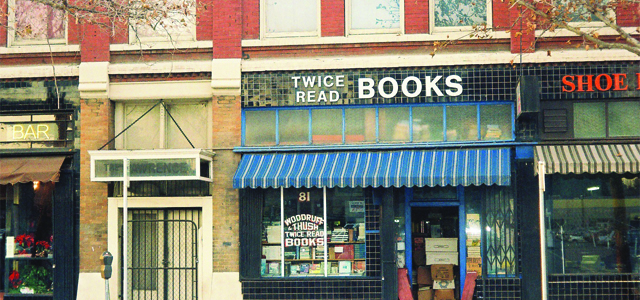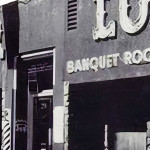The last time I entered Twice Read Books on San Fernando Street, I did not realize Italo Calvino’s novel Invisible Cities was already there waiting for me.
The store had occupied 81 East San Fernando since before my mom was even born. I first took the bus downtown as a teenager and went to several bookstores at that time, Twice Read being one of them. Craig Thush, the owner of the bookstore and the building, was the textbook example of an old crank—exactly what I wanted from the used bookstore experience.
At some point, I even heard that one of the other tenants in the building had a hand-written lease from Craig Thush. That told me all I needed to know.
Inside, the old wooden floorboards creaked in all the right ways. The place was jammed floor to ceiling with every possible variety of book, magazine or printed matter—in boxes, on shelves, or on the floor. In fact, the ceiling was actually the bottom of the second floor, accessed via a ramshackle wooden staircase at the back of the place, leading one to even more shelves and piles. It was a dusty haphazard vortex of sheer chaos, yet Thush knew exactly where everything was. If one wanted an April 1965 issue of Popular Mechanics, he had it. The entire area along the left wall, just past the cash register, was devoted to adult magazines. If you wanted a 1977 issue of Oui, it was there somewhere.
For the more curious explorers, for those that considered the journey itself the destination, Twice Read became a browser’s paradise. The glorious musty aroma of old books enveloped the place like a blanket. The interior was a maze. A labyrinth. A city within a city.
Which reminds me of Italo Calvino’s novel, Invisible Cities. In the book, Marco Polo reports from his travels, arguing with Kublai Khan, the latter of whom is delusional about the grandeur of his own legacy, his empire of shiny new buildings and his palace gardens. Khan wonders why Marco emphasizes melancholic forgotten places. Marco says that while the final perfect city raises its stainless glassy walls, he is collecting the ashes of the other cities that vanished to make room for it—cities that can never be rebuilt or remembered.
I know that feeling. At least I remember Twice Read Books.
Honestly, Thush didn’t act like he wanted to sell anything. He often priced each item based on how old it was. He’d pull out a handwritten price list on a deteriorating piece of cardboard, flaking at the edges, to tell me Mad books from the ’80s were six bucks, issues from the ’70s were eight bucks, and those from the ’60s were ten bucks. The price list was filled with the smallest possible handwriting, allowing him to cram a thousand things onto a piece of cardboard, leftover from when his dad, Morrie Thush, ran the place decades earlier.
Similar nonsense unfolded when Thush began selling records. People would show up and unload their old wobbly boxes of LPs, just as they’d done with books, and Thush would pile them up wherever he found room. Every LP was two dollars, except for Beethoven and the Beatles, which were three dollars. If the record was in horrendous condition or even cracked in half, it was still two dollars. He wouldn’t haggle one cent. That was how Thush operated. It was ridiculous.
All of which continued to unfold right up until 2003, the last year the bookstore was open. Various property owners and tenants then came along, some of whom paid their bills and some didn’t. I have no idea what happened to the hand-written lease.
These days, with the city of San Jose betting the farm on 20,000 tech workers moving into the neighborhood, all of whom only read e-books, there probably won’t ever be a masterpiece like Twice Read Books ever again. The concept of a musty labyrinthine used bookstore with half-century-old issues of Better Homes and Gardens piled on top of ’40s ham radio mags that nobody wants—any such place—will remain invisible in San Jose. It will never be rebuilt, but it shall always be remembered.

 Bodies in Motion
Bodies in Motion  Slavic Pearls
Slavic Pearls 


